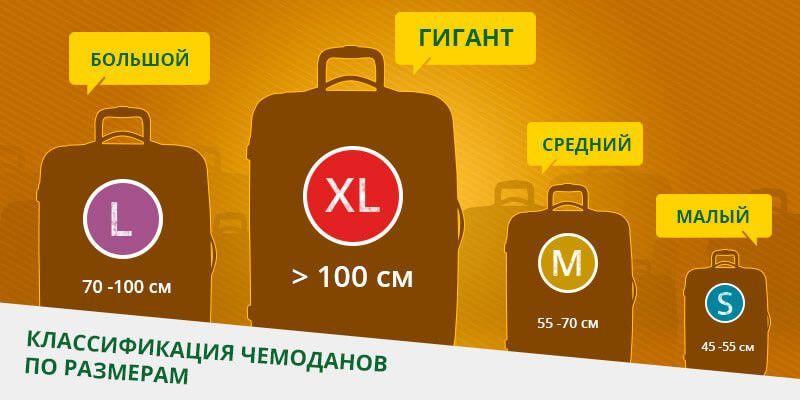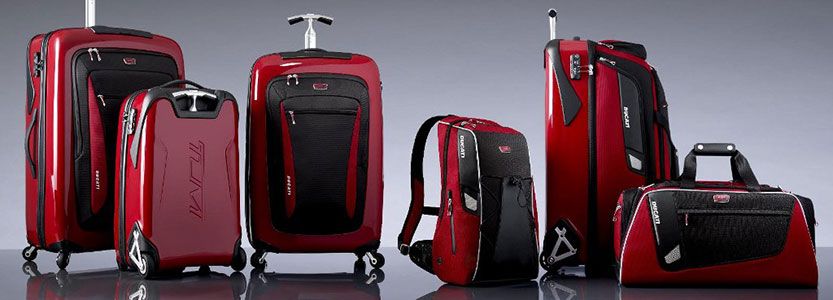One of the main characteristics of the product is, undoubtedly, its dimensions. When making suitcases, the metric system is used, where the size of a suitcase is measured in inches.
What types of suitcases are there?
The type of product depends on its purpose:
- road. Designed for short or long trips;
- specialized. Special housing for storing tools;
- representative. An object demonstrating prestige and position in society;
- universal. These include a briefcase, a suitcase for hand luggage, and a briefcase.
Capacity

According to capacity, suitcases are divided into the following categories:
- S – where: height up to 60 cm; capacity 50 l; 20 inches;
- M – where: height no more than 70 cm; capacity 90 l; 24 inches;
- L – where: height up to 100 cm; capacity 120 l; 28 inches;
- XL – where: height over 100 cm; capacity 180 l; 30 inches
Important. We must remember that sizes may vary by 3-5 cm, both up and down. The capacity of the finished product depends entirely on the manufacturer.
Design features
When choosing a suitcase, first of all you need to focus on its corners. For a quality product, the corner should be reinforced with a rubberized corner. It is ideal when there is a square on the outside and on the inside. The perimeter of the bag must be reinforced with a rigid frame.

Important. The presence of a corner and a rigid frame guarantee the integrity of the suitcase under any mechanical impact. This property is of no small importance when transporting fragile items.
One of the main components of a comfortable trip will be a suitcase equipped with wheels.
The product has four wheels and is easy to maneuver. The wheels are fixed at the corners, regardless of one another, and rotate in different directions. The disadvantages of such a suitcase are that it can only be used on flat surfaces.
For uneven surfaces, a suitcase with two wheels is more suitable.
Types of wheels
- Plastic wheels. Unreliable wheels that create a lot of noise. The presence of heavy luggage and obstacles on the roads causes them to crack and break.
- Silicone wheels. More reliable than plastic ones: silent, soft on the move, but easily broken due to heavy weight and bumpy roads.
- Rubber wheels. Very reliable: they can withstand heavy loads and do not create noise.
Material used in manufacturing
Advantages and disadvantages of products made from the following materials:
Fabric products

Convenient to use when traveling by train or car.
Advantages:
- low cost;
- light weight;
- the existence of large external pockets;
- not afraid of blows.
Flaws:
- does not reliably preserve fragile things inside;
- afraid of moisture;
- subject to deformation;
- difficult to keep clean.
Plastic products

Suitable for transporting delicate items.
Advantages:
- relatively light;
- protection from shock and moisture is provided inside;
- easy to keep clean.
Flaws:
- the surface is susceptible to scratches;
- afraid of blows.
Leather products

Indispensable for business trips.
Advantages:
- beautiful and noble appearance;
- prestigious thing;
- not exposed to moisture;
- easy care.
Flaws:
- high price;
- prone to scratches;
- heavy weight.
Important. To preserve its original appearance and protect it from external influences, you need to purchase a cover.
Purpose of each type
The choice of suitcase is influenced by the purpose and purpose of the trip.

For a short trip with a minimum number of things, by plane to a region with good roads will correspond to:
- 18-inch suitcase: height 55 cm; capacity 30 liters;
- four-wheeled;
- plastic or leather case;
- silicone wheels.
For long family vacations when traveling by car, it is recommended to use:
- large lightweight 24-28 inch suitcase: height 85 cm; capacity from 100 liters;
- fabric;
- two-wheeled.
A reliable and high-quality suitcase should have rubber wheels, a strong zipper, a wear-resistant body and an extremely comfortable inner area.


 1
1





